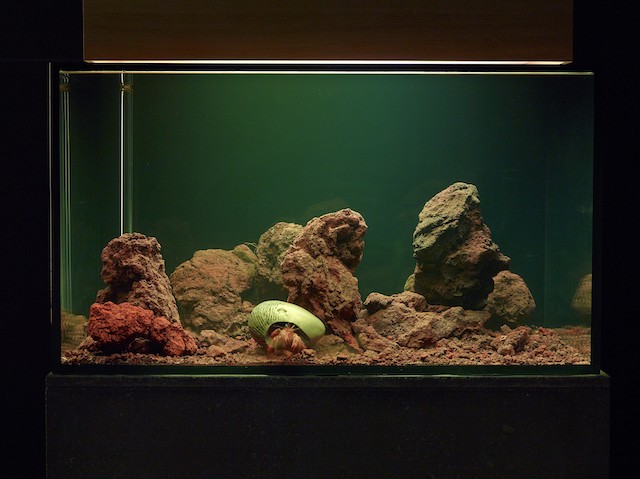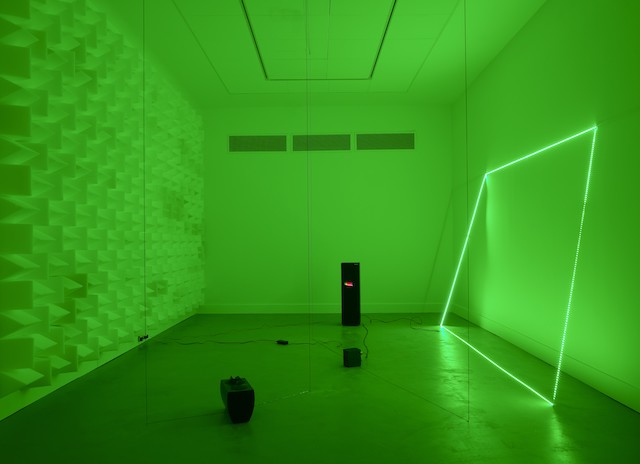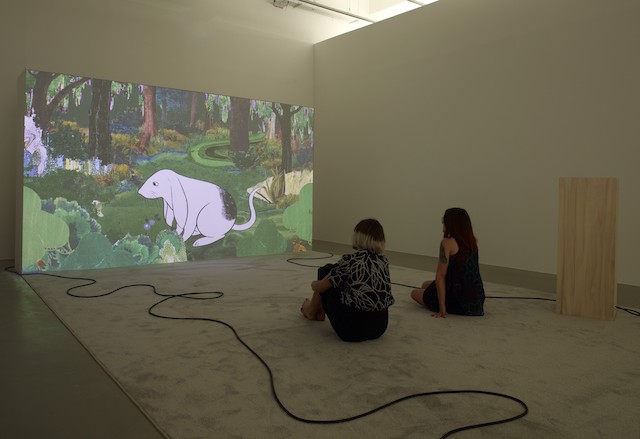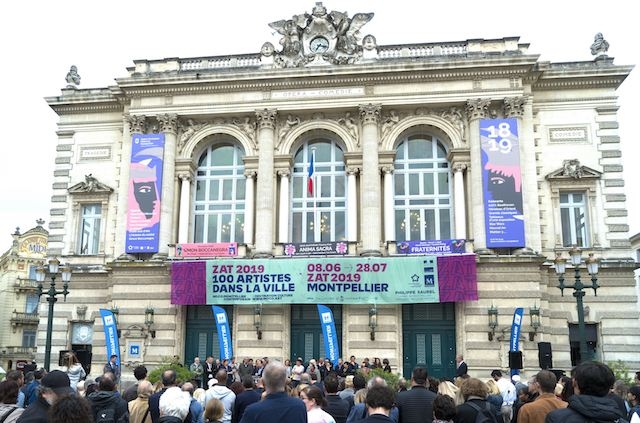It is hot on the last weekend in June in Montpellier – 37 degrees hot – and greeting the press corps in the palm-lined garden of the Hôtel des Collections, a cheerful Nicolas Bourriaud is doing a fair job of concealing his irritation towards EDF, the electricity company which hasn’t managed to switch on the power to the building in time for its opening press view. The Hôtel des Collections is the newest and final piece of Montpellier Contemporain – or MoCo – an institution which fuses the previously separate Montpellier art school (the ESBA), its local contemporary art centre La Panacée and the Hôtel, into a single organisation, with Bourriaud as its director.
Bourriaud might be temporarily pissed off with electricians, but he has a lot to be pleased about. Well-known as an influential curator, he was a key protagonist, during the 1990s, in the emergence of the loose movement of artists known under the rubric of ‘relational aesthetics’. Co-founder of Paris’s Palais de Tokyo, curator of international biennials (he’s curating the forthcoming Istanbul Biennale in September, following his 2014 Taipei Biennial), he was, from 2011 to 2015 director of Paris’s top art school the École Nationale Supérieure des Beaux-Arts, until he was fired in an increasingly public wrangle involving students, staff and finally the culture minister, over disagreements with the way he wanted to reorganise this ancient (but perhaps none too dynamic) art school. At the core of Bourriaud’s ambitious (if feather-ruffling) vision for the Beaux-Arts was the goal of bringing together teaching, exhibiting and the resource of historical collections into more active relationship; a model which would put teachers and students into closer contact with exhibition-making, curators and the professional artworld beyond the academy.

As things turned out, Bourriaud was almost immediately hired to head up the newly formed MoCo in 2015, and brought his curtailed experiment at the Beaux-Arts with him. Joining the ESBA and La Panacée, the Hôtel des Collections is a former mansion house in central Montpellier, now restored and converted to show temporary exhibitions drawn from existing collections of art from around the world, whether private or public. The inaugural show, Intimate Distance, is drawn from the Ishikawa Collection, the private collection of a Japanese businessman Yasuharu Ishikawa. Curated by Yuko Hasegawa, it’s an elegant excursion for the kind of works Bourriaud is most fond of – the conceptualist-inspired practices since the 1990s which deal thematically with either the personal or the grandly social – from Liam Gillick and Pierre Huyghe to younger artists such as Ryan Gander, Danh Vō and Rachel Rose. These are counterposed with various ‘ancestor’ figures such as Félix Gonzalez-Torres, Marcel Broodthaers and Lawrence Weiner, making a case for a long lineage of socially-invested yet poetic conceptualism.
But the point is not so much the content of the show – these are terrific works concisely presented – rather than what it proposes for dealing with the new realities of the contemporary artworld, and the relationship between public and private institutions. Discussing the Hôtel’s curatorial policy, Bourriaud sells it as a win-win scenario: public institutions can no longer afford to create substantial collections, yet private collectors accumulate works that rarely get shown. In this arrangement, collectors get the prestige of exposure, while Montpellier gets to see works in the context of a coherent collection. Asked if this doesn’t compromise the institution or give too much influence to the private collector, Bourriaud insists MoCo covers all the costs – shipping, installation and so on – and the invited collection has no say in how the curatorial decisions are made on what gets shown.

In any case, Bourriaud pointedly frames the Hôtel as hosting both private and public collections – with three shows a year planned, the next will be an exhibit of works from Moscow’s Tretyakov Gallery collection. This comes with a twist – the show will be drawn from those works that were first assembled by the curator Andrei Erofeev, who while working at the Tretyakov during the 2000s put together an unprecedented collection of avant-garde and dissident Russian art from the 1960s to the post-Soviet era. Erofeev was fired from the Tretyakov in 2008 following his curation of the scandal-provoking exhibition Forbidden Art (at Moscow’s private Sakharov Museum) the previous year, which saw him prosecuted by the government for ‘inciting hatred’.
Bourriaud’s pragmatic take on inviting collections raises the tempo of art made available to Montpellier’s public. And alongside La Panacée, which is currently showing the jam-packed, Hou Hanru-curated exhibition The Street, a version of a show Hou produced for his own MAXXI in Rome, it makes for a remarkable resource, not least for ESBA’s students, who, Bourriaud remarks, are becoming an increasingly international cohort, as the school sets its sights on becoming much more than just a regional art college.
MoCo’s integration of showing and teaching, away from costly metropolitan centre of Paris, points to a different way of thinking about how art’s infrastructure connects with a global scene. Regionalisation, in this instance, is the flipside of globalisation. This does raise some critical questions, though, about whether plugging a regional centre more substantially into the bigger international art scene will only serve to homogenise that regional scene, replicating and repeating ways of thinking and ways of making. (After all, it may only be coincidence, but Rachel Rose also happens to be showing a newly commissioned film at the huge LUMA Foundation campus in Arles, little more than an hour’s drive east of Montpellier.) Or, more optimistically, one might see a place like ESBA take on these international influences in order to come up with alternatives to them. That kind of dynamism would, perhaps, be the proof that MoCo’s institutional experiment with integration might achieve more than the (no doubt laudable) goal of hooking the artworld’s periphery into its centre.

First published on artreview.com 26 July 2019
